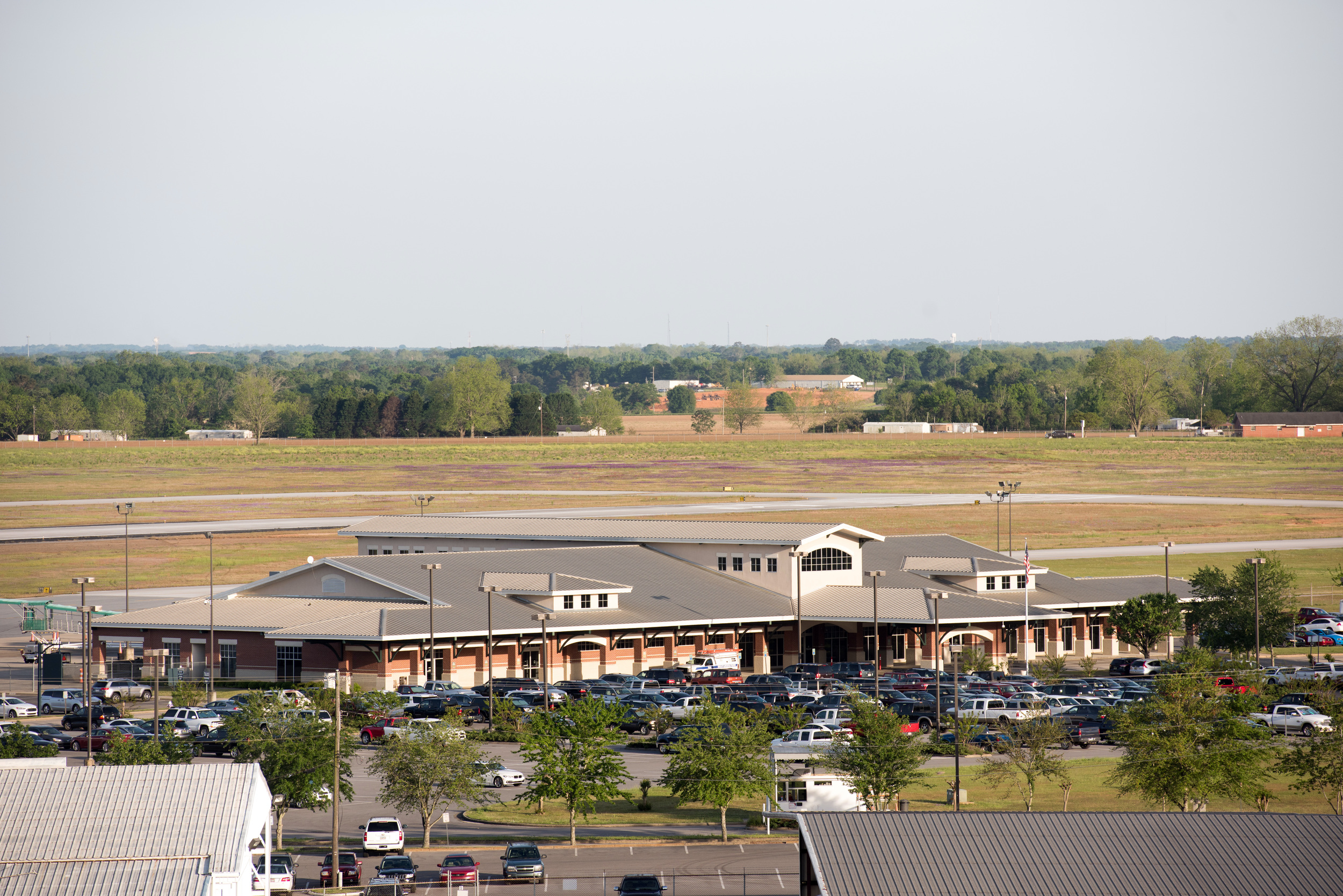Situated in the southeastern corner of Alabama, Dothan Regional Airport (DHN) serves as a vital artery for the Wiregrass Region, linking this historically rich area to the broader tapestry of the United States. In this blog post, we explore the history, facilities, and unique aspects of DHN, illuminating its significance not just as a transportation hub, but as a cornerstone in the community’s economic and social fabric.
The Origins: From Agricultural Land to Airstrip
Before Dothan Regional Airport carved its niche in the skies, the area was primarily agricultural land, reflective of the Wiregrass Region’s strong farming heritage. This rural backdrop set the stage for the birth of an airfield that would grow to become an essential part of the region’s infrastructure.
World War II: The Catalyst for Transformation
The real turning point in the airport’s history came with the advent of World War II. The airfield, known then as Napier Field, was repurposed as a military training base. This period was marked by significant investments from the U.S. government, which saw the construction of runways, hangars, and other critical infrastructure. The base trained thousands of pilots, playing a crucial role in the war effort and leaving a lasting military legacy in the region.
The Post-War Era: Paving the Way for Civil Aviation
As the war ended and the need for military bases diminished, Napier Field transitioned to civilian use. This shift was pivotal, marking the beginning of the airfield’s journey as a public airport. The transition involved significant restructuring to accommodate commercial airlines and passenger services, a move that would reshape the region’s connectivity and economic landscape.
Steady Growth and Community Integration
In the decades following the war, Dothan Regional Airport steadily grew, paralleling the rise of commercial aviation in the United States. The introduction of commercial air services opened new avenues for business and leisure travel, linking the Wiregrass Region to major urban centers.
Over the years, DHN has seen various enhancements to its infrastructure. These improvements were not just about expanding the physical facilities but also about upgrading the technology and services to meet the evolving demands of air travel. From modernizing the runway to upgrading the terminal building, each step in the airport’s development was geared towards creating a more efficient and passenger-friendly environment.
The Military’s Enduring Influence
Even as Dothan Regional Airport transitioned to a public airport, the influence of its military past remained evident. The skills and disciplines from its days as a military base have permeated into its operations, evident in the airport’s strategic planning and its approach to safety and efficiency.
Today, DHN stands as a modern airport, but it still pays homage to its past. The airport’s history is a point of pride for the community, with various exhibits and displays highlighting its journey from a World War II military base to a key regional airport.
In summary, the storied past of Dothan Regional Airport is a compelling narrative of transformation and adaptation. From its early days rooted in agriculture to its vital role in World War II, and its eventual rise as a hub for civil aviation, DHN’s history is intricately linked with that of the Wiregrass Region. This airport is not just a transit point; it’s a symbol of regional pride and resilience, continuously evolving to meet the needs of its community and beyond.
Unique Aspects of Dothan Regional Airport (DHN)
Dothan Regional Airport (DHN), nestled in the heart of the Wiregrass Region of Alabama, is more than just a transit hub; it embodies a blend of unique characteristics that reflect the area’s cultural and historical richness. These distinct features not only set DHN apart from larger, more impersonal airports but also contribute to a memorable and engaging travel experience.
A Cultural Gateway to the Wiregrass Region
- Local Art and Heritage: One of the most striking features of DHN is its celebration of local culture. The airport’s terminal showcases artwork and exhibits that tell the story of the Wiregrass Region, from its agricultural roots to its military history. This focus on local heritage provides travelers with a sense of place and an immediate connection to the region’s unique identity.
- Architectural Design: The architectural design of the airport, while functional, also pays homage to the local environment. The use of regional materials and a design aesthetic that mirrors the local landscape help the airport blend seamlessly into its surroundings, making it a true reflection of the Wiregrass Region.
A Hub for General and Business Aviation
- General Aviation Services: Apart from commercial flights, DHN serves as a vital center for general aviation. This includes services for private aircraft, corporate jets, and aviation training. The airport’s general aviation facilities provide a critical service to the private and business aviation community in the region.
- Business Aviation Facilities: For business travelers, DHN offers tailored services that include private meeting areas, lounges, and specialized concierge services. These facilities ensure that business travel is efficient, comfortable, and conducive to productivity.
Community Integration and Engagement
- Event Hosting: DHN is not just a place for planes to land and take off; it’s a venue for community events and gatherings. The airport regularly hosts aviation-related events, educational programs, and community gatherings, reinforcing its role as an integral part of the Wiregrass community.
- Educational Outreach: The airport also engages in educational outreach, offering tours and programs that provide insights into the world of aviation. These programs are particularly beneficial for young people, inspiring the next generation of aviators and aviation enthusiasts.
Focus on Personalized Passenger Experience
- Passenger-Centric Services: Despite its smaller size, DHN is known for its personalized approach to passenger service. The airport staff are often praised for their friendly and helpful attitude, making travel through DHN a pleasant and stress-free experience.
- Efficient and Convenient Layout: The compact size of the airport contributes to its ease of navigation. This efficiency is a boon for travelers who prefer a quick and straightforward transit without the hassle of navigating larger, more complex airports.
Role in Regional Economic Development
- Economic Catalyst: Beyond its role in transportation, DHN is a driver of economic growth in the Wiregrass Region. It supports local businesses by facilitating travel and logistics and contributes to job creation in the area.
- Tourism Gateway: The airport also plays a significant role in promoting tourism in the region. By providing easy access to Dothan and its surroundings, DHN helps attract visitors to local attractions, festivals, and cultural events.
Weather-Ready Operations
Dothan Regional Airport (DHN) showcases a commendable level of preparedness and resilience in its weather-ready operations, a crucial aspect for an airport located in a region known for its variable and sometimes challenging weather conditions. Equipped with state-of-the-art meteorological technology, DHN’s operations team is adept at forecasting and responding to diverse weather scenarios, ranging from the intense heat and humidity characteristic of Alabama summers to the sporadic thunderstorms that can occur with little warning. This preparedness ensures minimal disruption to flight schedules and maintains the highest safety standards for both passengers and aircraft. The staff’s training and readiness to handle these meteorological challenges not only highlight DHN’s commitment to operational excellence but also enhance the overall reliability and reputation of the airport as a safe and efficient hub in the Southeastern United States.
Future Outlook of Dothan Regional Airport
Looking to the future, Dothan Regional Airport aims to expand its services and facilities to meet the growing demands of air travel. Plans for expansion include upgrading existing structures and potentially adding more routes to connect Dothan with other major cities.
In line with global trends, DHN is also focusing on sustainability. Efforts are underway to incorporate eco-friendly practices in its operations, ensuring that the airport grows in harmony with the environment.
In conclusion, Dothan Regional Airport stands as a testament to the enduring spirit of the Wiregrass Region. Its evolution from a military airfield to a key regional airport mirrors the growth and resilience of the community it serves. Whether for business, leisure, or connecting with loved ones, DHN offers a gateway to and from this vibrant region of Alabama, underlining its significance as a pivotal hub in the southeastern United States.







0 Comments